Explore Zanskar Valley In Ladakh For An Exceptional Journey In 2025
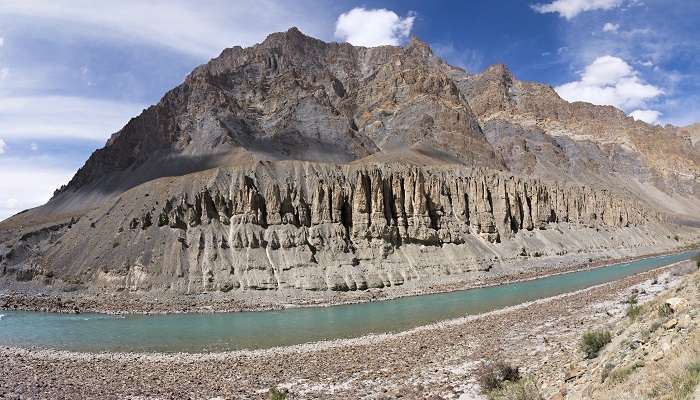
Zanskar Valley is located within the peaks of the Himalayan Mountain Range. The valley is known for its ancient culture. It is amidst the remote area of Ladakh in the eastern region of the Northern Indian State of Kashmir. This place is known for its barren land, tall cliffs and the gorges where rivers flow. A range of mountains called the Zanskar Range separates Zanskar Valley from the Indus Valley in Leh. This valley is home to numerous Tibetan Buddhist Monasteries. Zanskar Valley invites thrill-seekers and spiritual seekers to witness the beauty of its rugged terrain.
Trekking In Zanskar Valley
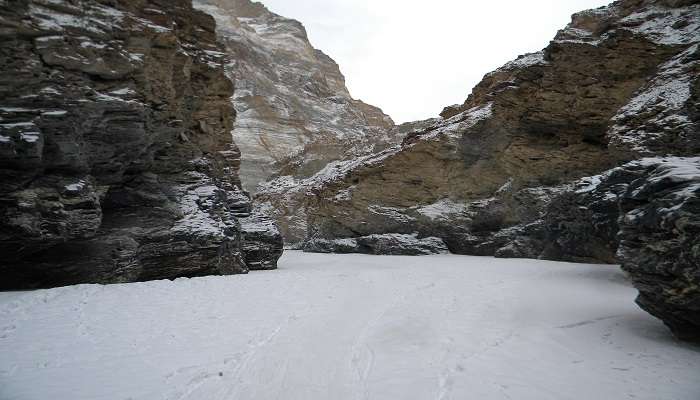
There are notable treks that trekkers should experience in this arid region of the Himalayas. A few include the Chadar Trek, Markha Valley Trek, Stok Kangri Trek, Padum to Darcha Trek and Phuktal Monastery Trek. Chadar Trek is the most famous trek in Zanskar Valley, and it is organised only during the winter when the Zanskar River freezes. Markha Valley Trek makes the trekkers cross Ganda La Pass Kongmaru La Pass while exploring beautiful meadows and barren mountains. Stok Kangri Trek invites thrill-seekers to explore the highest peak of the Stok Range in the Himalayas by trekking at 6000 metres. Padum To Darcha Trek connects Zanskar Valley with Lahaul Valley in Himachal Pradesh. Trekkers pass through Penzi La Pass and Shingo La Pass, with Buddhist Monasteries perched on the landscapes.
Must Read: Trekking In Ladakh
Things To Do In The Valley
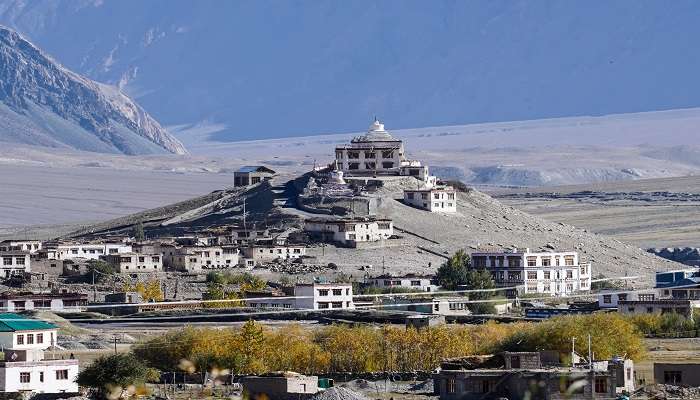
Zanskar Valley offers various activities to be done in the region and its surroundings. It caters to nature lovers, cultural enthusiasts and adventure seekers altogether.
River Rafting And Kayaking
River Rafting is possible in the summer months when the river melts. It is suitable for both beginners and experienced rafters.
Explore Villages
Exploring the nearby villages of Padum, Zangla and Rangdum is recommended, which offer a glimpse of the local life with traditional houses and their daily chores.
Wildlife Spotting
Diverse wildlife is spotted in Zanskar Valley, including snow leopards, ibex, blue sheep, and various bird species.
Yak Safaris
Visitors experience a unique mode of transport on yak. A Yak Safari is taken on the high-altitude pastures of the valley, which provide amazing views of the rugged terrain.
Places To Visit Near The Valley
The crowds visit many notable places around Zanskar Valley. The valley serves as a gateway to other tourist destinations in the region. Here is a list of a few places to visit in the Zanskar Valley:
1. Suru Valley
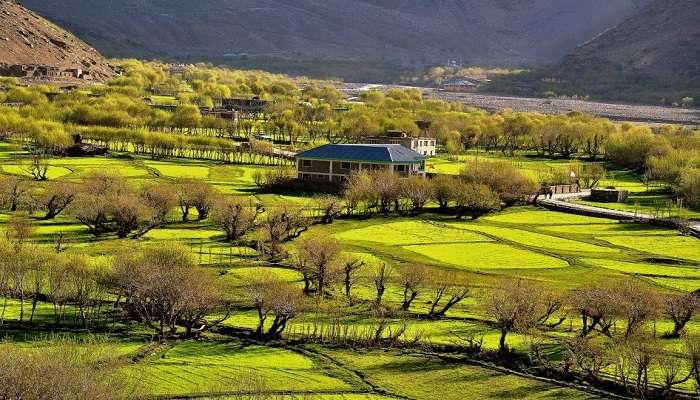
Suru Valley is a Kargil District in the Union Territory of Ladakh. A river flowing across is the Suru River, a tributary of the Indus River. The most magnificent town of Suru Valley is Sankoo. Animals like horses, yaks and cows are found across the valley. It gets snow-filled during winter with severe snowfalls and avalanches. Visitors rush to Padum and Zanskar after spending an ideal time in this valley. It offers several summer tent camps around. It is a base camp and a starting point for several mountaineering expeditions.
Location: Suru Valley Kargil District, Ladakh
Distance From Zanskar Valley: 155 km
Suggested Read: New Year In Ladakh
2. Drang Drung Glacier
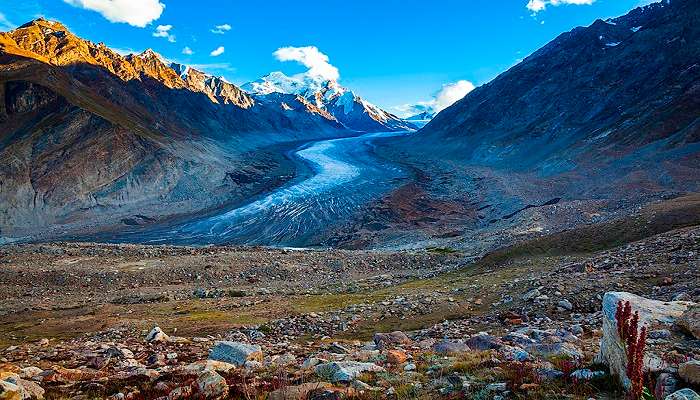
The Drang Drung Glacier is also known as Durung Drung Glacier. This mountain glacier is near Pensi La Pass on the Kargil-Zanskar Road. The glacier is located in the Kargil District of Ladakh. This glacier is considered to be the largest glacier after the Siachen Glacier. It has a length of 23 km at an altitude of 4780 metres. Drang Drung Glacier is located in the Zanskar Range. It is accessible from the town of Kargil and lies on the right side of Kargil-Zanskar Road. It also passes through a deep gorge of the Suru River.
Location: Zanskar Range, Pensi La, Kargil District, Ladakh
Distance From Zanskar Valley: 89.5 km
3. Sani Monastery
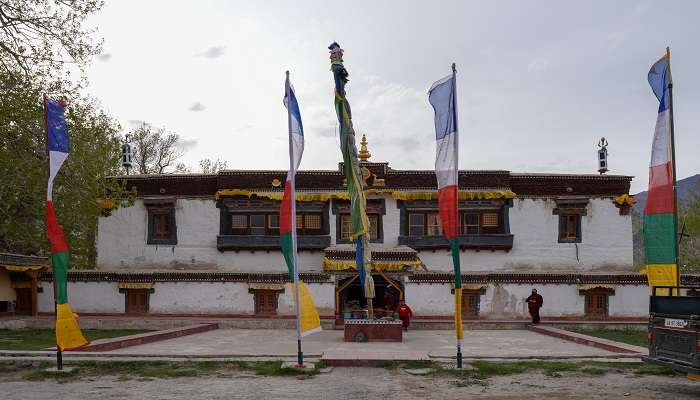
Sani Monastery is located on the central plains of Zanskar in Ladakh. It is adjacent to the tiny village of Sani. This monastery belongs to the Drukpa Kargyu School Of Tibetan Buddhism. It is the only monastery in Zanskar that features nuns. Sani Monastery is the oldest monastery and a religious site in Ladakh. The monastery celebrates a festival named Sani Naro-Nasjal in the first week of August. The festival takes place during the blooming of the Guru Neropa Flower. An annual ritual called the ‘Great Prayer Festival’ occurs in winter when villages gather and provide firewood.
Location: Sani Village, Zanskar Valley, Kargil District, Ladakh
Distance From Zanskar Valley: 26.4 km
Suggested Read: Places To Visit In Leh Ladakh
Cuisine Of Zanskar

The cuisine of Zanskar reflects the region’s climate and a few Tibetan influences. These dishes sustain the locals especially, during winter. Here is a list of a few dishes that you should try while you are here:
Thukpa
Thukpa is a noodle soup made with vegetables, chunks of meat, or sometimes dumplings. The soup is spicy and flavoured with local spices, making it a popular dish.
Skyu
This traditional Zanskari dish is made from wheat flour rolled into small dumplings with vegetables. It is served with butter.
Butter Tea
Gur Gur Chai, or Butter Tea, is a traditional hot beverage in Zanskar and other Himalayan regions. It is made by churning tea leaves and yak butter until they form a frothy drink.
Chang
This is a fermented barley beer. It is brewed at home and served during native festivals and special occasions. It is slightly sour in taste.
Tingmo
Tingmos are Tibetan-style steamed bread rolls. In Zanskar, they are served with savoury dishes or eaten with beverages as they are soft and fluffy.
Further Read: River Rafting In Ladakh
Zanskar Valley is a symbol that depicts the timeless beauty that stands as a testament to Ladakh’s culture. The place offers access to the views of the Himalayan Mountains and all the ancient monasteries subjected to Tibetan Buddhism. This valley is visited not only by thrill-seekers but also by spiritual seekers who believe that the peaceful environment of the region’s natural beauty is essential for spiritual reflections.
Whether exploring the nearby spots for heavenly tourism or embracing the beauty of this rugged terrain, your trip to Ladakh will be unforgettable. Many rivers flow through the valley, and some parts are considered to be the coldest inhabited places on the globe.
For our editorial codes of conduct and copyright disclaimer, please click here.
Cover Image Credit: Ingo Mehling for Wikimedia Commons
Frequently Asked Questions About Zanskar Valley
Why is Zanskar Valley famous?
This valley is not only famous for some of its rugged terrain but also the snow-covered mountains that offer beautiful landscapes. Zanskar Valley is 105 km away from Leh and offers a variety of activities like river rafting and paragliding.
How to reach Zanskar Valley?
Zanskar Valley is easily accessible from Leh. The easiest way to reach this place is to fly to Leh and take a cab to Kargil. From Kargil, it is recommended to take a taxi to Padum. Visitors usually visit Zanskar on their way back to Srinagar.
Which river flows in Zanskar Valley?
Lungnak River flows in the Zanskar Valley. It flows from a narrow gorge in the northwest of the region’s central valley. This river later merges with the Doda River forming the Zanskar River.
What is the Speciality of Zanskar?
Zanskar is located in the neighbouring region of Ladakh. Two beautiful lakes are located at a higher altitude with turquoise water and many camping sites. It also offers amazing views of the surrounding range of mountains with snow-covered peaks.
When to visit Zanskar?
The most preferred time to visit Zanskar is from the months of June to September. This valley located in the Union Territory of Ladakh offers pleasant weather during this period which is perfect for spending a while in this region.
People Also Read:
Niti Valley Trek To Valley Of Flowers Spiti Valley

We all have to begin somewhere. This is where I start and I hope that my writings encourage you to begin. To new beginnings and conquering new places!











